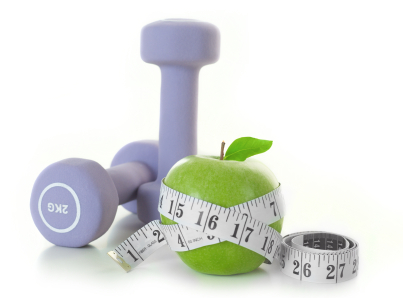The Takeaway: If it’s difficult for you to find time for exercise, focus on these three rules to take care of your body as best you can:
- If there’s no time for a workout, at least stretch your muscles.
- When exercising several times a week, even if only for a few minutes, make cardio the priority.
- Incorporate core and strength training when you can (after the first two rules are followed).
Until now, I could only hope to understand the plight of those that said, “I just don’t have time to workout.” I’ve always thought it was more of a matter of time management and priorities (and I still do). But I must say that I have a newfound respect for those limited by time…now that we have a newborn!
Like most people, I consider myself one of the busiest people I know, even before our beautiful little girl arrived. As I write this, she’s just a couple of weeks old and I find myself living my life two hours at a time, whether it’s in the middle of the night or mid-day. I thought this would be a great opportunity to pass along a smart way to create a workout that doesn’t take hours out of your week, but allows you to focus on more important matters…like caring for a newborn or raising children!
Let me start by saying that this article may not apply to everyone. If you’re training for a bodybuilding competition, a marathon, or something else that requires extra time and dedication, this post isn’t for you. Those activities and events require large amounts of training time. Let’s face it, if they didn’t everyone would be a bodybuilder or marathon runner, right?
No, this article is meant for those who feel like all they do is work…on the job, and then again at home, with little-to-no free time, and repeat the cycle day in and day out without reprieve.
The first thing to realize is that maintaining a healthy lifestyle isn’t about having large blocks of free time available for the gym. It’s not about having hours on end to cook nutritious meals. The truth is that small changes in your diet can make a difference, and it doesn’t take 6 hours of physical activity each week to be healthy.
What it does take, however, is consistency. Consistency is more important than the length or intensity of your workouts. Once habit patterns are created, you’ve taken the first (and usually the most difficult) step on your journey to a healthier life.
How Much Time is Required?
Let’s get the bad news out of the way. The Centers for Disease Control and the USDA both recommend 2 hours and 30 minutes of physical activity per week (less if the workout intensity is higher). This equates to 30 minutes each day if you workout five days each week.
Now for the good news…you don’t have to start with that amount. If you’re not performing any activity at the moment, then start with just a few minutes a day, say 10 or 15 minutes. Soon, you’ll be able to add a few more minutes each day, and gradually get closer to recommended guidelines.
How does this advice differ from all the other “lose fat in 5 minutes each day,” or “six-pack abs overnight” promises? I understand (as should you too) that to get results, you have to work at it. Shortcuts may exist, but you’ll likely sacrifice in other areas like your overall health. This advice, like all of that put forth by TD Fitness, uses educated training principles in a practical way to reach realistic goals. If you follow this advice, you’ll be in better shape, feel better, move better, and create habit patterns that you can build upon.
So what’s the plan? [Download the updated minimalist training plan here.]
This plan can be used for men or women. Exercise duration won’t change, but your fitness and ability level will determine how intense the workouts are. As you become more fit and have more time available in your schedule, increase the length of the workouts.
The exercise groups are broken up into percentages that you can apply no matter how little time you have available. The plan below is based on 15 minutes per day for 5 days a week…
Cardio: 40% of your total weekly workout time.
- Duration: 10 minutes followed by 5 minutes of stretching
- Frequency: Perform 3 times per week.
You’ll note that cardiovascular activity accounts for the greatest percentage of your total weekly workout time. Cardio is important because it improves heart health. It also helps to have a good baseline cardiovascular fitness level when working toward goals such as weight loss or endurance training. Activities that you can jump right into include running, walking or biking. If you find that you have extra time during the week or on weekends, perform more cardiovascular activity. Make it fun…sports and games count too!
Stretching: 30% of your total weekly workout time.
- Duration: 5 minutes
- Frequency: Perform 5 times per week.
The next important element of your overall fitness is flexibility. The effects of decreased flexibility typically aren’t highlighted until injury occurs. Flexibility is not only required for injury prevention, but you’ll be surprised how much of an impact being loose and limber can have on your demeanor and mobility. Stretch everyday for 5 minutes. As your workout times increase, increase the amount of time you devote to stretching. If you only have is a few minutes available (i.e. not enough time to do cardio and get cleaned up), use the time to stretch.
As for which stretches to perform, a fitness assessment will give you a good idea as to which parts of your body are least flexible. The most common tight areas are the chest, lower back, hip flexors, hamstrings, calves, and achilles.

Core Development: 15% of your total weekly workout time.
- Duration: 10 minutes
- Frequency: Perform once per week.
A strong core is important for posture, strength, stability, and performing the activities of daily life. Rather than banging out 200 crunches, opt for exercises that challenge the core without placing strain on your lower back. Front and side planks, and back bridges can be pieced together for a quick 10-minute workout with the correct amount of intensity.


Strength Training: 15% of your total weekly workout time.
- Duration: 10 minutes
- Frequency: Perform once per week.
Strength training builds muscle, creating a stronger you and increasing fat burn. To maximize time, opt for exercises that work multiple muscle groups at the same time and that require little to no equipment. Variations of push-ups, pull-ups, body-weight squats, and lunges work the major muscle groups and engage the core. As you allow for more time for your workouts, use equipment to perform exercises that work the chest, back, legs, glutes, and hamstrings.
The stresses and obligations of life should not prevent you from taking care of yourself. In fact, exercise is a stress reliever, and being fit allows you to better take care of your obligations. Good health also reduces the chances of illness by better preparing your body to fight viruses and infections when they come around. Incorporate fitness activities into your daily routine to feel better, move smoother, and be stronger.
 Marathon Finisher…Your Post-Event Recovery Guide
Marathon Finisher…Your Post-Event Recovery Guide